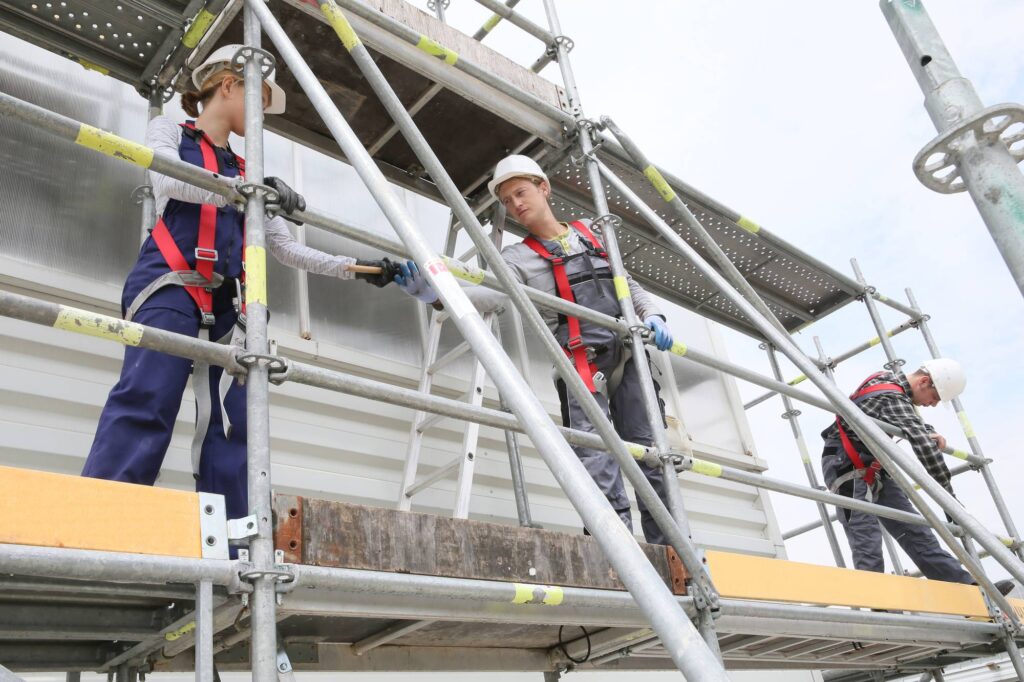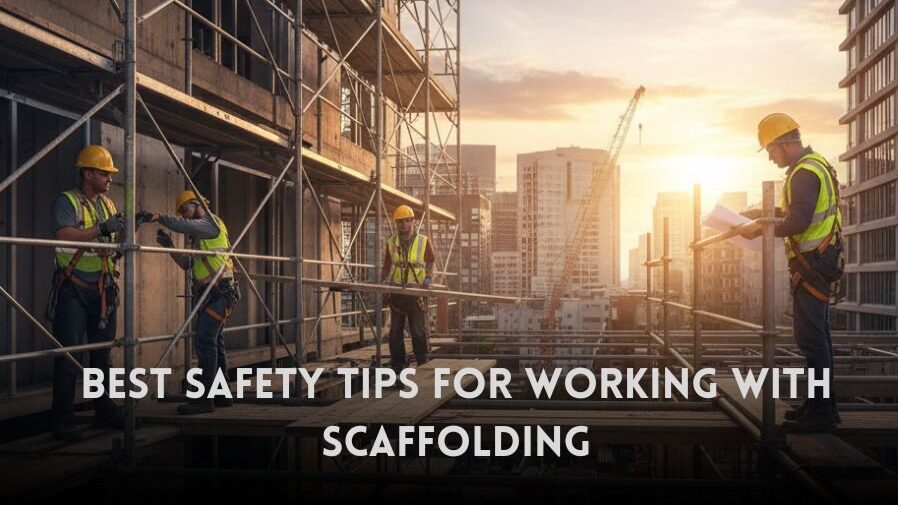Best Safety Tips for Working with Scaffolding- Scaffolding services are considered better options for different construction projects because of safety. But this safety needs to be maintained and balanced, as considerations like PPE are important. Workers should be wearing the correct PPE by ensuring all the safety measures are actually safe. Non slip footwear and fall protection gear are some of the things that help avoid risks. It is also important that the scaffolding is on a stable surface with guardrails when the work is going on. Safety tips should be followed for these projects, including regular inspection of the scaffolding. Exceeding the load limit is also a risk factor as the scaffolding won’t be stable. For stability, workers should follow the weight limitations of scaffoldings.
Are you looking for some safety tips for your next scaffolding project? If yes, then you’ve come to the right blog, which has listed the best safety tips for working with scaffolding
Table of Contents
ToggleList Of The Best Tips for Working with Scaffolding
1. Before You Start
Risk Assessment
To identify potential hazards, you need to do a risk assessment before the construction even starts. This is one the most important Tips for Working with Scaffolding, as you can fix any scaffolding issue beforehand after checking. Before even erecting the scaffolding, you should check these things for worker safety:
- Power lines
- Unstable ground
Competent Person
The importance of competent persons in scaffolding projects is clearly mentioned in the regulations. This is important for the safety of the workers, as no unqualified persons should be working with scaffolding. This competent person should be qualified enough to assemble the scaffolding the right way. During the scaffolding assembly, a trained supervisor should always be present.
Inspection
When we talk about safety tips when working with scaffolding, inspection stands to be important. This is because inspecting the scaffolding is a necessity each time a construction starts. Before each use, the scaffolding should be inspected for:
- Damage
- Missing parts
- Loose connections
Training
Every single worker must be trained enough on safe scaffold use that they know what they’re doing. Proper training is important not only for their safety, but also to avoid damage to the scaffolding. This tip is important because training also comes under the safety regulations for scaffolding.
2. Setting Up and Using the Scaffold
Stable Foundation
To distribute weight evenly, the scaffolding must be erected on a level surface for stability in work. This means that the level surface should have appropriate base plates to prevent anything from falling apart. You should follow these type of Tips for Working with Scaffolding.
Guardrails and Toeboards
Guardrails should be installed for scaffolding operations for extra safety and smooth work. This is important to prevent falls, which usually happen in scaffolding work without any of those. Toeboards also help in preventing any materials from falling off the scaffolding.
Load Capacity
Scaffolds have a maximum load capacity that they can take, so exceeding that will cause risks. So, it is best to adhere to the load capacity of scaffoldings for:
- Personnel
- Tools
- Materials
Planking
It is for the safety of all that planking should be inspected in case of scaffolding used in projects. By inspecting, you will instantly know if there are any gaps between the planks. If there are, then those gaps should be minimized as soon as possible before you start the scaffolding work.
Clearance from Power Lines
Maintain a safe distance from power lines when the scaffolding work is going on.
3. During Use
PPE
Appropriate personal protective equipment is a must for scaffolding construction. Every worker needs to wear them all the time while working with scaffolding. These include:
- Hard hats
- Non-slip footwear
- Fall protection gear
Keep it Clean
The scaffolding should be maintained with regular cleaning, so that nobody trips. An organized scaffolding prevents:
- Slips
- Trips
- Falls
No Stretching
Guardrails are for your protection, but nobody should be stretching or leaning over them. Instead of that, a proper fall arrest system should be used.
No Ladders on Scaffolds
Some workers sometimes place ladders on top of scaffolds, which is extremely risky. Even to increase height, this shouldn’t be done when working with scaffolding.
Secure Against Wind
Wind can also mess with scaffolding, so it should be tied to the building itself for safety. This way, no one can trip over high winds in scaffolding operations.
What Are Some Other General Safety Practices?

1. Weather Awareness
Some weather conditions are known to make scaffoldings slippery, so no one should be working then. Even if the scaffolding work is going on, it should immediately be stopped in these conditions:
- High winds
- Heavy rainy
- Icy conditions
2. No Storage
Working shouldn’t be using scaffolding as a permanent storage area for any tools.
3. Report Issues
If anyone notices any issues with the scaffolding, including damaged components, then it is to be reported. This shouldn’t be ignored at all for the safety of everyone working on the scaffolding.
Conclusion
Scaffolding operations require the best safety tips to ensure everything goes smoothly. Workers on scaffolds should be aware of certain weather conditions in which construction is to be avoided. PPE should be properly used by every worker while working with scaffolding to avoid risks. Risk assessment is a common type of assessment done before the work starts with scaffolding.
FAQs about Best Safety Tips for Working with Scaffolding
Q – What are the key safety tips when working with scaffolding?
A – When working with scaffolding, you should follow these key safety tips:
- Use proper safety equipment
- Know the load limits
- Build properly
- Keep the area organized
- Train all workers
Q – What safety tips do I follow before the scaffolding work starts?
A – The biggest safety tip for when the scaffolding operations haven’t begun is risk assessment.
Q – What steps do I follow to check for risks with scaffolding work?
A – You can check for risks with scaffolding by following these steps for your safety:
- Identify work areas
- Identify the hazards
- Assess the hazards
- Determine protective measures against falls
Q – What are the weight limitations of scaffoldings?
A – The weight limitations of scaffolding differ depending on the one being used, but can range from 25 to 75 PSF.

